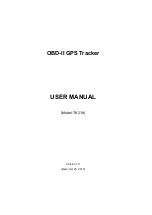
Garmin G2000 Pilot’s Guide for the Cessna T240
190-01263-01 Rev. A
418
Hazard avoidance
SY
ST
eM
o
ver
vie
W
FL
iGHT
in
ST
rUM
en
TS
ei
S
a
Udio
&
cn
S
FL
iGHT
M
ana
G
eM
en
T
Hazard
av
oid
ance
a
Fc
S
addi
Tiona
L
Fea
TU
re
S
a
PP
endice
S
inde
X
EXCESSIVE DESCENT RATE ALERT
The purpose of the
Excessive Descent Rate (EDR)
alert is to provide notification when the aircraft is
determined to be closing (descending) upon terrain a rate that is calculated to be excessive relative to height
above terrain. Figure 6-94 shows the parameters for the alert as defined by TSO-C151b.
0
500
1000
1500
2000
2500
3000
3500
4000
4500
5000
5500
6000
0
1000
2000
3000
4000
5000
6000
7000
8000
9000
10000
11000
12000
Descent Rate (FPM)
Height Above T
err
ain
(Feet)
Caution:
“SINK
RATE”
Warning: “PULL UP”
Figure 6-94 Excessive Descent Rate Alert Criteria
FORWARD LOOKING TERRAIN AVOIDANCE (FLTA)
The Forward Looking Terrain Avoidance (FLTA) feature of TAWS compares the projected flight path as
derived from GPS data with terrain features and obstacles from the terrain and obstacle databases. The system
issues visual annunciations and voice alerts when the projected flight path conflicts with terrain or obstacles.
The projected flight path is a calculated area ahead of, to the sides, and below the aircraft. The size of
the projected flight path varies based on factors including ground speed (the path ahead is larger when the
ground speed is higher), whether the aircraft is level, turning, or descending, and the proximity to the nearest
runway along the current track. As the aircraft approaches the runway, the projected flight path becomes
narrower until the system automatically disables FLTA alerts or the pilot manually inhibits them.
There are two types of FLTA alerts, Reduced Required Terrain/Obstacle Clearance (RTC or ROC respectively)
and Imminent Terrain/Obstacle Impact (ITI or IOI respectively).
Reduced Required Terrain Clearance (RTC)
and
Reduced Required Obstacle Clearance (ROC)
alerts are issued when the aircraft flight path is above terrain, yet is projected to come within the minimum
clearance values in Figure 6-95. When an RTC alert is issued, the system shows a potential impact point on
maps with relative terrain display enabled.
Imminent Terrain Impact (ITI)
and
Imminent Obstacle Impact (IOI)
alerts are issued when the
aircraft is below the elevation of a terrain or obstacle in the aircraft’s projected path. ITI and IOI alerts are
accompanied by a potential impact point displayed on maps with relative terrain display enabled. The alert is
This manual downloaded from http://www.manualowl.com
















































